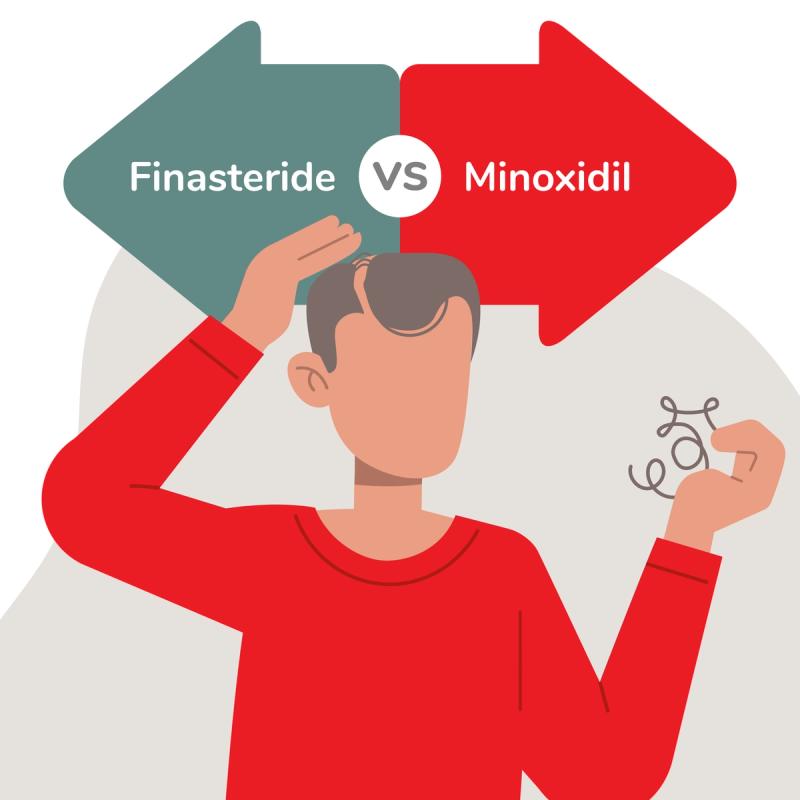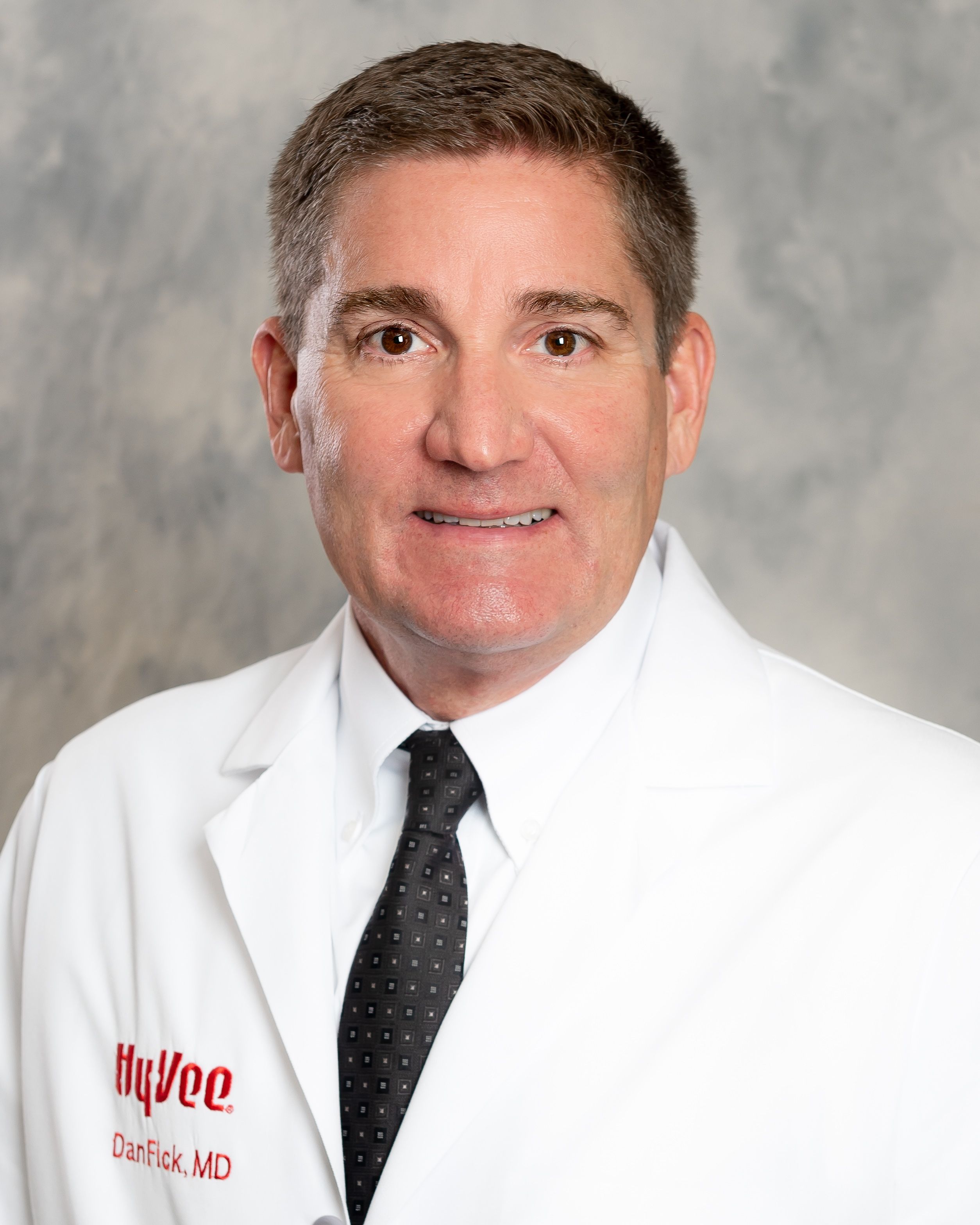Hair loss is a common and frustrating condition to deal with, and more so than some other conditions, it can carry the added weight of social pressure and embarrassment.
Medicated products can help prevent hair loss and promote hair regrowth for many users. Two of the most popular types of medication are finasteride (Propecia®) and minoxidil (Rogaine®, LONITEN®). So how do finasteride and minoxidil compare for your hair loss needs, or should you use a combination of the two?
Learn about finasteride and minoxidil to find the best hair loss treatment for you.
Key Takeaways
Finasteride is a prescription oral medication that blocks 5-alpha-reductase to lower scalp DHT and slow hormonal hair loss.
Minoxidil is available in an over-the-counter topical or prescription oral tablet and stimulates hair growth by shortening the follicle resting phase.
Using finasteride and minoxidil together increases effectiveness versus using either medication alone.
What is finasteride?
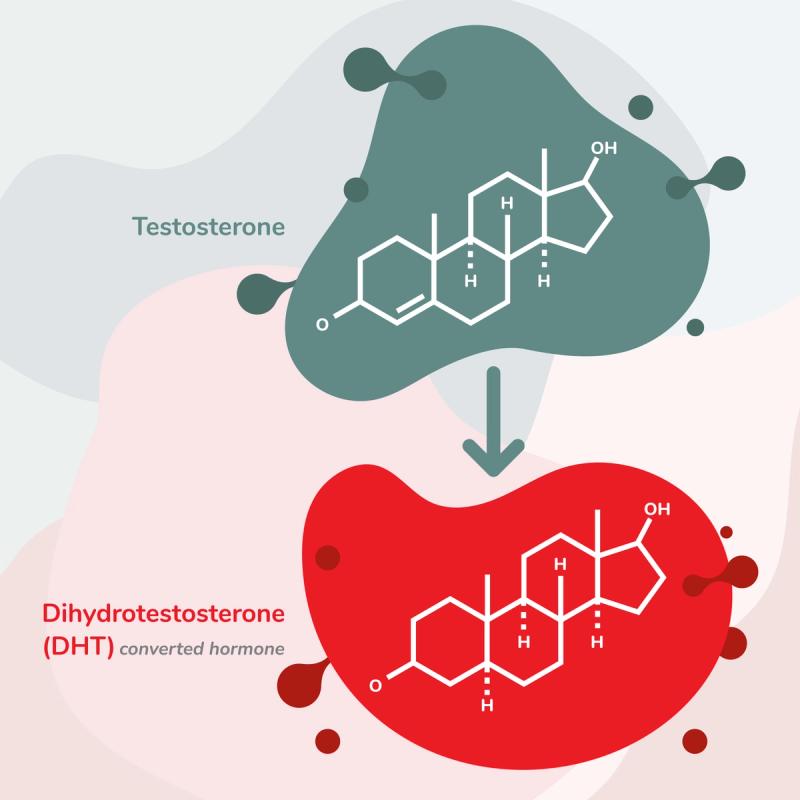
Finasteride1 is an oral medication used to treat hair loss in men. It works by blocking the enzyme 5-alpha-reductase. This enzyme converts testosterone into a hormone that can cause hair loss.
Finasteride users can experience an increase in hair follicles on the scalp, which can help minimize the appearance of hair loss or baldness.
Common brands of finasteride include Proscar and Propecia. However, the medication is widely available in generic forms and is prescribed in 1 mg doses from RedBox Rx.
What is minoxidil?
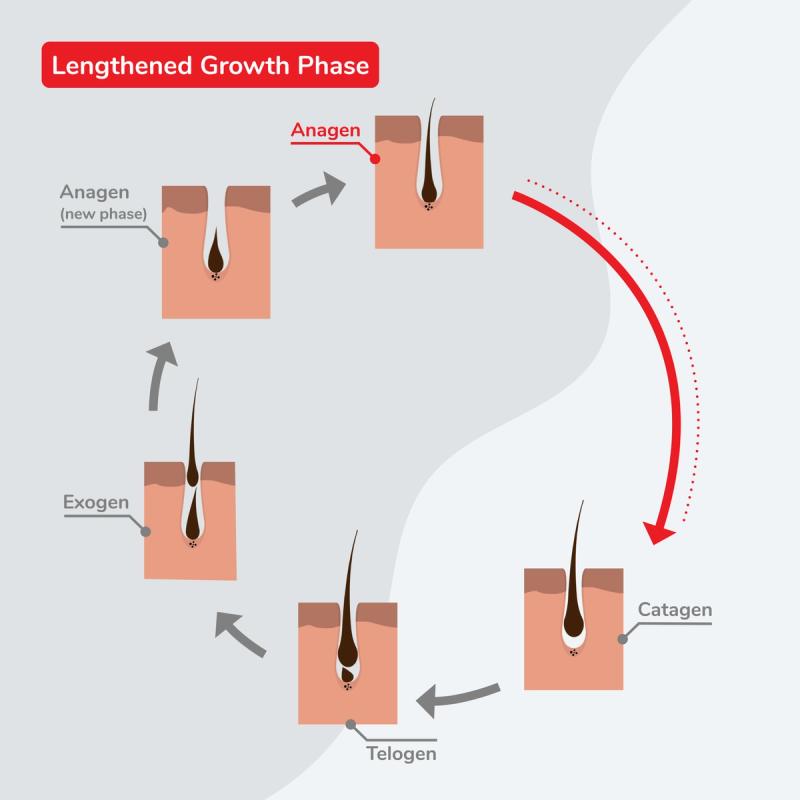
Minoxidil2 is a medication used to prevent hair loss. It is commonly used for male pattern baldness but has also been found effective for women who experience hair loss. Minoxidil is available both as a topical application and as an oral medication. The most common brand name of topical minoxidil is Rogaine, most often prescribed in 2% and 5% strength topical applications. RedBox Rx offers 5% minoxidil foam. Another brand name of minoxidil, LONITEN, is available as an oral tablet prescription.
With continued use, minoxidil has been proven to help stimulate hair growth in users. It works by shortening the resting phase of hair follicle growth and encouraging follicles to move into a lengthened growing, or anagen, phase.3
What’s the difference between finasteride and minoxidil?
The main differences between finasteride and minoxidil are their use and function. Finasteride helps regrow hair follicles, and minoxidil helps prevent hair loss.
Minoxidil is available over-the-counter as a topical medication. Oral minoxidil and finasteride are available by prescription only.
Due to the complementary functions of finasteride and minoxidil, both medications can be used in conjunction to combat and reverse hair loss in men. Finasteride is not recommended for use in women.4
Finasteride vs. Minoxidil Topical vs. Minoxidil Oral Comparison
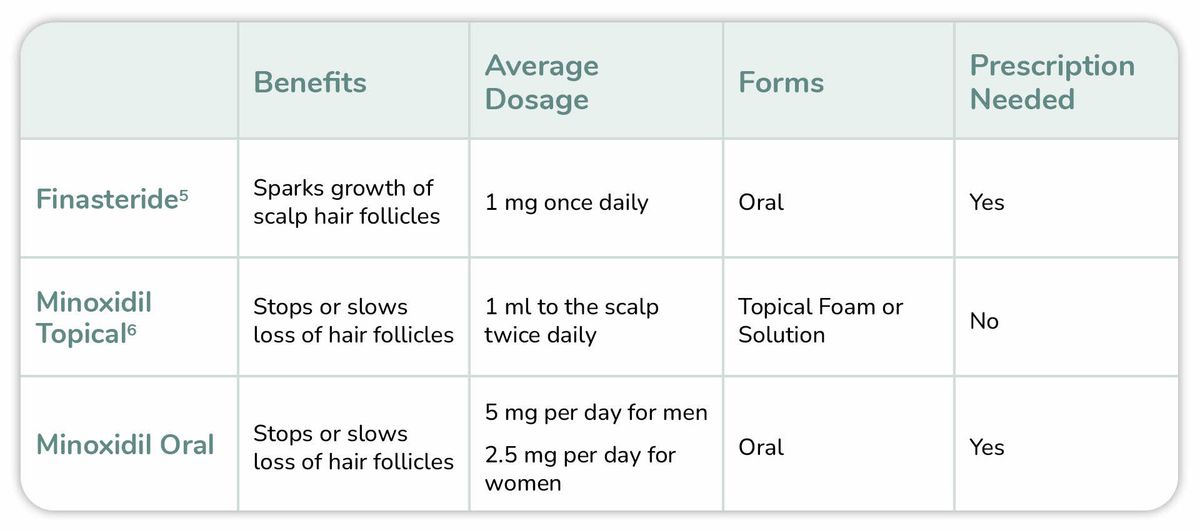
Can finasteride and minoxidil be used together?
Finasteride and minoxidil can be used safely in combination to combat hair loss in men. These two medications work better together than either one alone.
In one study, 94.1% of men using a combination of finasteride and minoxidil reported improvement in hair regrowth and reduction in hair loss. This was compared to 80.9% of men who used finasteride only and 59% who used minoxidil only.7 Start an assessment with RedBox Rx if you are interested in a prescription combination pack of finasteride and minoxidil for men.
How do finasteride and minoxidil work together to increase effectiveness?
Finasteride is an oral medication that helps spark the regrowth of hair follicles on the scalp. Minoxidil, in both oral and topical forms, helps slow or stop hair loss at the source. The different applications and functions of the medications make them complementary.

Get FDA-Approved Prescription Options for Hair Loss
We’re sure you’ve been told that hair loss is a normal part of life. But what if it doesn’t have to be? Our U.S. licensed medical providers will discuss proven treatments to help you find what once was lost.
Get Started For FreeWhat are the side effects of finasteride and minoxidil?
No medication regimen is free from side effects. Luckily, the side effects of finasteride and minoxidil are both mild.
Side effects of finasteride
Common side effects of finasteride8 include:
Chills.
Cold sweats.
Confusion.
Dizziness or lightheadedness.
Side effects of topical minoxidil
Common side effects of topical minoxidil9 include:
Stinging and redness at the application site.
Rash (rare).
Side effects of oral minoxidil
Common side effects of oral minoxidil10 include:
Increase in hair growth, usually on face, arms and back.
Breast tenderness.
Headache.
Bloating.
Flushing or redness of skin.
Swelling of feet or lower legs.
What results can you expect from finasteride and minoxidil?
If both medications work as intended, you can expect to see a decline in hair loss and an increase in hair regrowth. Results for individuals will vary; however, in one study,11 a combination of finasteride and minoxidil showed improvement in hair growth in 94.1% of men, compared to 80.5% of men who used finasteride alone and 59% of men who used minoxidil alone.
Both finasteride and minoxidil must be used daily for the best results. If either medication is stopped, the hair loss could continue and hair regrowth will stop. Therefore, finasteride and minoxidil must be continued indefinitely if hair loss treatment is desired.
How RedBox Rx can help with hair loss
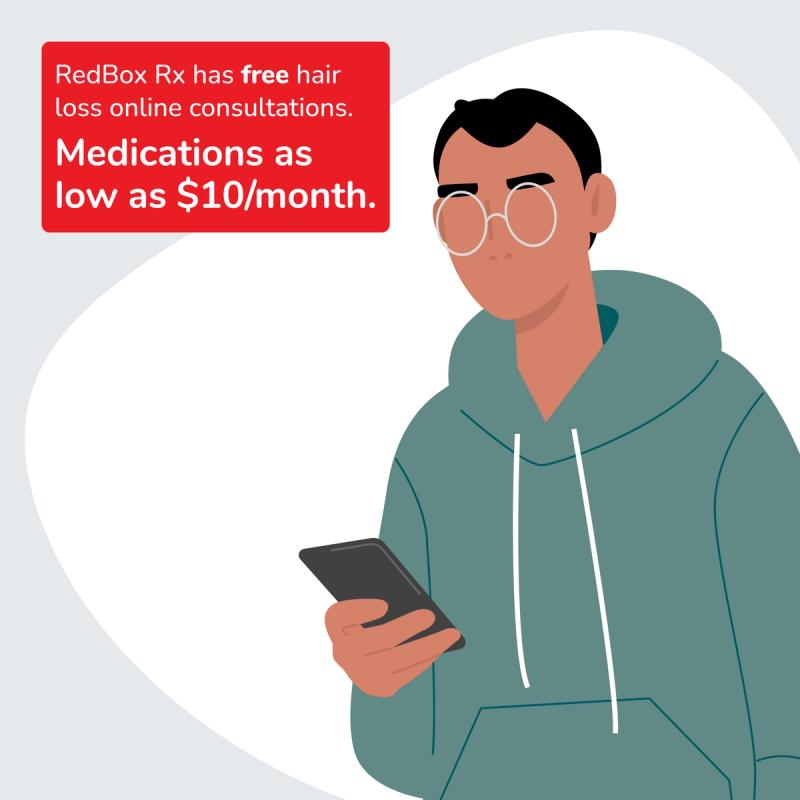
RedBox Rx makes receiving medication treatment for hair loss easy and affordable.
Benefits of RedBox Rx include:
Transparent, affordable, flat rates for medications starting at $10/month or $90 for a year supply of finasteride.
FREE consultations with a U.S. licensed medical provider.
No insurance required. HSA and FSA eligible.
No office wait times or scheduling issues typical with physical medical practices.
FREE shipping directly to you. Quarterly subscriptions available.
RedBox Rx has options of finasteride and minoxidil individually, as well as a combination pack with both medications together for men. Minoxidil is available for women.
Get started on your hair loss treatment journey with our short online assessment for men’s hair loss or women’s hair loss.

